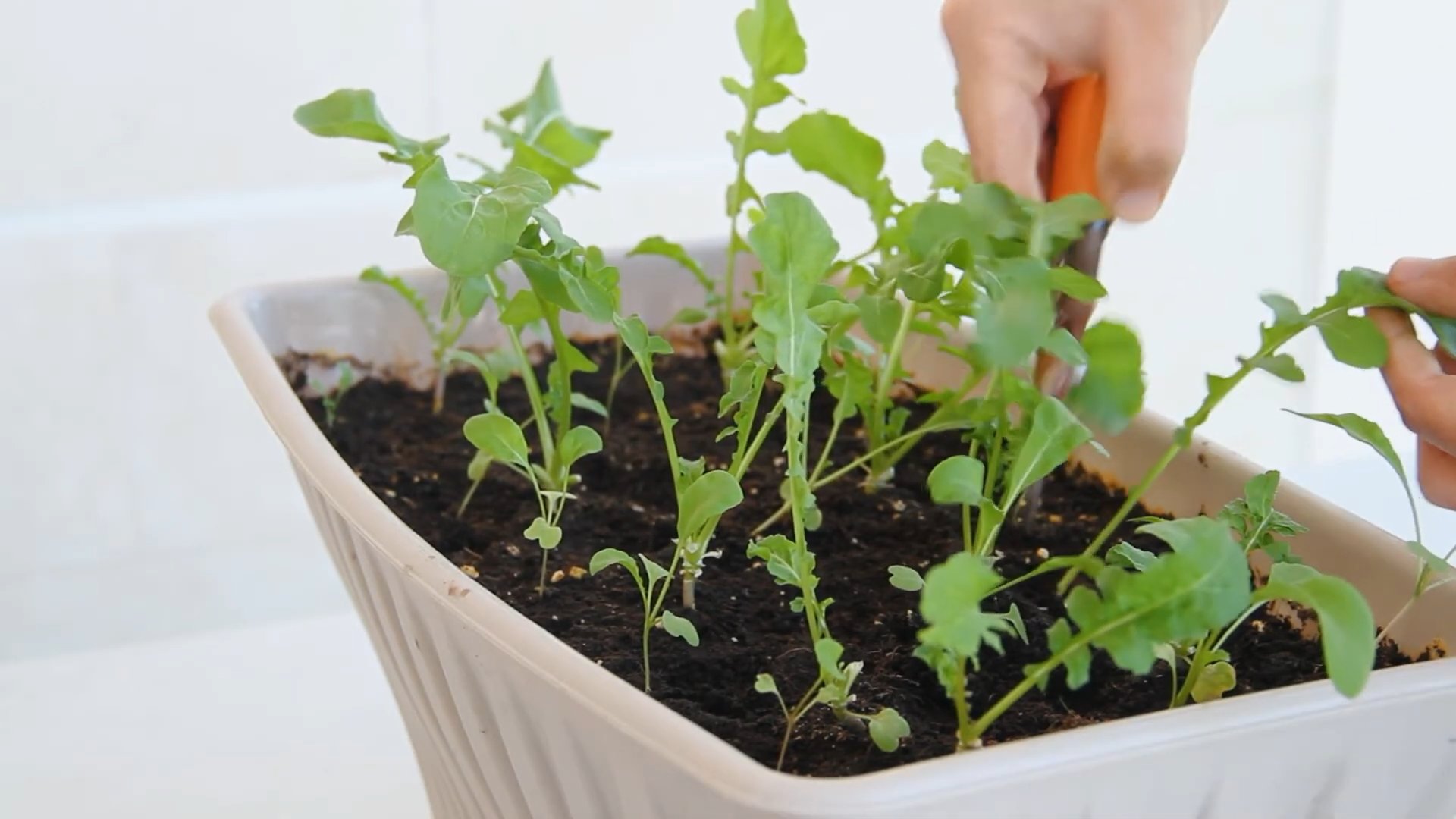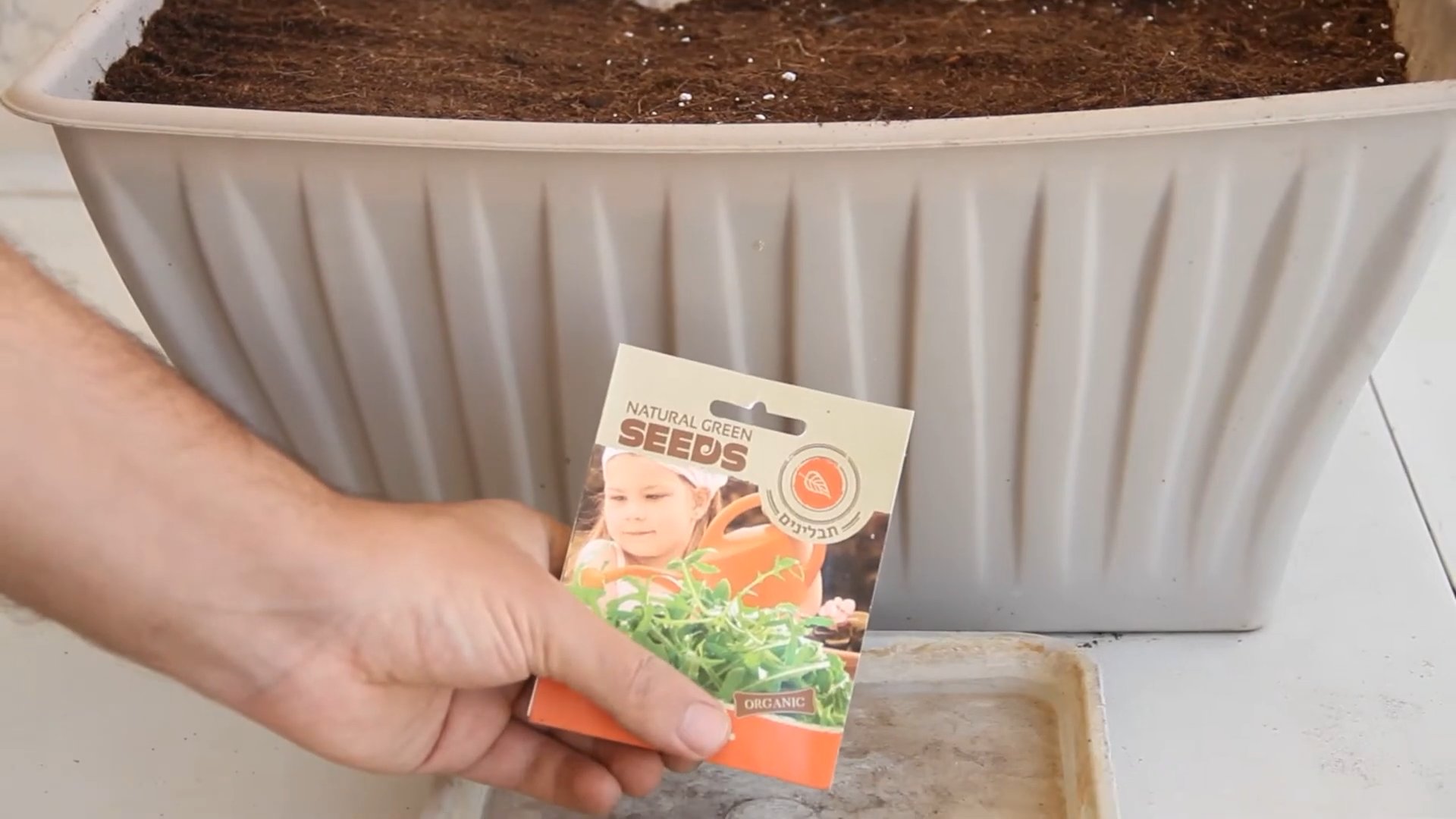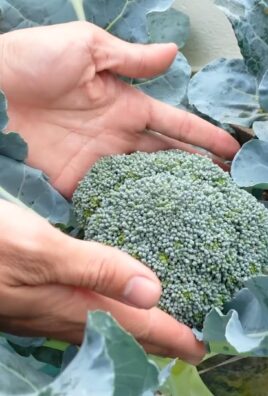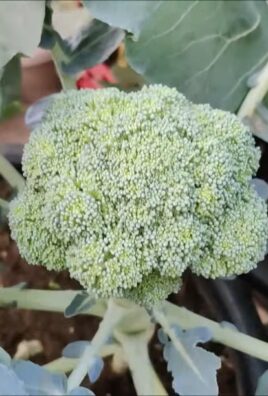Grow Arugula Indoors? Absolutely! Imagine fresh, peppery arugula gracing your salads and sandwiches, even when the snow is falling outside. No more sad, wilted greens from the grocery store – just vibrant, flavorful arugula harvested right from your windowsill. For centuries, cultivating herbs and vegetables indoors has been a practice rooted in necessity and ingenuity. From ancient Roman window boxes to medieval monastery gardens, people have always found ways to bring the bounty of nature inside.
But why should you learn to grow arugula indoors? Well, for starters, it’s incredibly rewarding! There’s something deeply satisfying about nurturing a plant from seed to harvest. Plus, it’s a fantastic way to save money on groceries and reduce your carbon footprint. Let’s be honest, who doesn’t love fresh, organic produce at their fingertips? This DIY guide is packed with simple, effective tricks and hacks to help you successfully grow arugula indoors, regardless of your experience level. I’m here to guide you through every step, from choosing the right container to harvesting your delicious, homegrown arugula. Get ready to unleash your inner gardener and enjoy the taste of summer all year round!

Grow Your Own Arugula Indoors: A Step-by-Step Guide
Hey there, fellow gardening enthusiasts! Are you craving that peppery, zesty arugula flavor but don’t have a garden or the weather isn’t cooperating? No problem! I’m going to walk you through how to grow your own delicious arugula indoors. It’s easier than you think, and you’ll have fresh greens at your fingertips all year round.
What You’ll Need
Before we dive in, let’s gather all the necessary supplies. Trust me, having everything ready beforehand will make the process much smoother.
* Arugula Seeds: Choose a variety that you like. I personally prefer ‘Astro’ arugula because it’s quick to mature and has a great flavor.
* Containers: You can use pots, trays, or even repurposed containers like yogurt cups or plastic tubs. Just make sure they have drainage holes! I usually opt for containers that are at least 6 inches deep.
* Potting Mix: Use a high-quality potting mix that’s well-draining. Avoid using garden soil, as it can compact and not provide adequate drainage for indoor growing.
* Grow Lights (Optional but Recommended): While arugula can grow near a sunny window, grow lights will provide consistent and sufficient light, especially during the darker months. I use LED grow lights, and they work wonders.
* Spray Bottle or Watering Can: For gentle watering.
* Small Shovel or Trowel: For handling the potting mix.
* Seed Starting Tray (Optional): If you want to start your seeds in a separate tray before transplanting.
* Plant Labels (Optional): To keep track of what you’ve planted.
Getting Started: Sowing Your Arugula Seeds
This is where the magic begins! We’re going to plant those tiny seeds that will soon become a peppery salad sensation.
1. Prepare Your Containers: Fill your chosen containers with potting mix, leaving about an inch of space at the top. Gently pat down the soil to create a level surface.
2. Sow the Seeds: Sprinkle the arugula seeds evenly over the surface of the soil. Arugula seeds are small, so don’t overcrowd them. I usually aim for about 1/4 inch spacing between seeds.
3. Cover the Seeds: Lightly cover the seeds with a thin layer of potting mix, about 1/4 inch deep.
4. Water Gently: Use a spray bottle or watering can with a gentle nozzle to water the soil thoroughly. You want the soil to be moist but not waterlogged.
5. Provide Light: Place your containers in a location that receives at least 6 hours of sunlight per day, or under grow lights. If using grow lights, position them a few inches above the soil surface. I usually keep my grow lights on for about 14-16 hours a day.
6. Maintain Moisture: Keep the soil consistently moist by watering regularly. Check the soil moisture daily and water when the top inch feels dry to the touch.
Nurturing Your Arugula: From Seedling to Harvest
Now that your seeds are sown, it’s time to nurture them into healthy, vibrant arugula plants.
1. Germination: Arugula seeds typically germinate within 5-7 days. You’ll start to see tiny green sprouts emerging from the soil.
2. Thinning (If Necessary): If your seedlings are too crowded, thin them out by gently snipping off the weaker ones at the soil line. This will give the remaining plants more space to grow. I usually thin them to about 1-2 inches apart.
3. Watering: Continue to water regularly, keeping the soil consistently moist. Avoid overwatering, as this can lead to root rot.
4. Fertilizing (Optional): Arugula doesn’t require a lot of fertilizer, but you can give it a boost with a diluted liquid fertilizer every few weeks. I use a balanced organic fertilizer diluted to half strength.
5. Light: Ensure your arugula plants receive adequate light. If using grow lights, adjust the height as the plants grow to keep them a few inches away from the light source.
6. Air Circulation: Good air circulation is important to prevent fungal diseases. You can improve air circulation by placing a small fan near your plants or by opening a window for a few hours each day.
Harvesting Your Arugula: Enjoying the Fruits (or Leaves!) of Your Labor
This is the best part! Harvesting your own homegrown arugula is incredibly rewarding.
1. When to Harvest: You can start harvesting arugula leaves when they are about 2-3 inches long. The younger leaves will have a milder flavor, while the older leaves will be more peppery.
2. How to Harvest: Use scissors or your fingers to snip off the outer leaves, leaving the inner leaves to continue growing. This is known as a “cut-and-come-again” harvesting method, which allows you to harvest multiple times from the same plant.
3. Harvest Regularly: Harvest your arugula regularly to encourage continued growth. If you let the plants bolt (go to seed), the leaves will become bitter.
4. Washing and Storing: Wash your harvested arugula leaves thoroughly and pat them dry. Store them in a plastic bag in the refrigerator for up to a week.
Troubleshooting: Common Arugula Growing Issues
Even with the best care, you might encounter some challenges along the way. Here are a few common issues and how to address them:
* Leggy Seedlings: This usually indicates insufficient light. Make sure your arugula plants are receiving enough sunlight or grow light.
* Yellowing Leaves: This could be caused by overwatering, underwatering, or nutrient deficiencies. Check the soil moisture and adjust your watering schedule accordingly. You can also try fertilizing with a balanced fertilizer.
* Pests: Arugula can be susceptible to pests like aphids and flea beetles. Inspect your plants regularly and treat any infestations with insecticidal soap or neem oil. I prefer using organic pest control methods whenever possible.
* Bolting: Bolting occurs when the plant starts to produce flowers and seeds, which can make the leaves bitter. To prevent bolting, keep the soil consistently moist and provide adequate shade during hot weather. Harvest regularly to encourage continued leaf production.
Tips and Tricks for Arugula Success
Here are a few extra tips and tricks I’ve learned over the years to help you grow the best arugula possible:
* Succession Planting: To ensure a continuous supply of arugula, sow new seeds every few weeks. This is called succession planting.
* Choose the Right Variety: Experiment with different arugula varieties to find the ones you like best. Some varieties are more heat-tolerant than others, so choose accordingly.
* Use a Seed Starting Tray: If you’re starting your seeds indoors during the colder months, consider using a seed starting tray with a humidity dome. This will help to create a warm, moist environment that’s ideal for germination.
* Rotate Your Crops: If you’re growing arugula in the same containers year after year, rotate your crops to prevent soilborne diseases.
* Don’t Overwater: Overwatering is one of the most common mistakes that indoor gardeners make. Arugula prefers moist soil, but it doesn’t like to sit in water. Make sure your containers have drainage holes and water only when the top inch of soil feels dry to the touch.
* Harvest in the Morning: The best time to harvest arugula is in the morning, before the sun gets too hot. This is when the leaves are at their freshest and most flavorful.
* Enjoy Your Harvest: Arugula is a versatile green that can be used in salads, sandwiches, pizzas, and more. Get creative and experiment with different ways to enjoy your homegrown arugula!
Arugula Recipes to Try
Now that you have a bountiful harvest of fresh arugula, here are a few delicious recipes to try:
* Arugula Salad with Lemon Vinaigrette: Toss arugula with lemon juice, olive oil, salt, pepper, and a touch of honey. Add some shaved Parmesan cheese and toasted pine nuts for extra flavor.
* Arugula Pesto: Blend arugula with Parmesan cheese, garlic, pine nuts, olive oil, and lemon juice. Use it as a spread for sandwiches, a topping for pasta, or a dip for vegetables.
* Arugula Pizza: Top your favorite pizza crust with tomato sauce, mozzarella cheese, and cooked sausage or pepperoni. After baking, add a handful of fresh arugula for a peppery kick.
* Arugula and Goat Cheese Crostini: Toast slices of baguette and spread them with goat cheese. Top with arugula, a drizzle of honey, and a sprinkle of red pepper flakes.
* Arugula Smoothie: Add a handful of arugula to your favorite smoothie recipe for a boost of nutrients and a slightly peppery flavor. It pairs well with fruits like berries, bananas, and mangoes.
Growing arugula indoors is

Conclusion
So, there you have it! Growing arugula indoors is not only achievable but also incredibly rewarding. Imagine fresh, peppery arugula leaves just steps away, ready to elevate your salads, sandwiches, and pizzas any time of year. Forget those wilted, overpriced greens from the grocery store. With a little effort and the right setup, you can have a constant supply of vibrant, flavorful arugula right in your own home.
This DIY trick is a must-try for several reasons. First and foremost, it puts you in control of your food source. You know exactly what goes into growing your arugula – no pesticides, no hidden chemicals, just pure, fresh goodness. Secondly, it’s a fantastic way to reduce your carbon footprint. Think about all the transportation and packaging involved in getting arugula from a farm to your table. Growing it yourself eliminates much of that environmental impact. Finally, it’s simply a fun and fulfilling project. There’s something deeply satisfying about nurturing a plant from seed to harvest, and the delicious reward makes it all worthwhile.
But don’t stop there! Experiment with different varieties of arugula. Try the wild arugula for an even more intense peppery bite, or explore some of the milder, more tender varieties. You can also play around with different growing mediums. While soil works perfectly well, you might want to try hydroponics for a faster, more efficient growing experience. Consider adding companion plants like basil or chives to your indoor garden to enhance the flavor and deter pests.
Ready to embark on your indoor arugula adventure? We encourage you to give this DIY trick a try. It’s easier than you think, and the benefits are undeniable. Once you’ve harvested your first batch of homegrown arugula, be sure to share your experience with us! Tell us about your successes, your challenges, and any tips you’ve discovered along the way. Post photos of your thriving arugula plants and delicious creations on social media using #IndoorArugula and #DIYGardening. Let’s build a community of indoor gardeners and inspire others to grow their own food! We are confident that you will find that growing arugula indoors is a simple and effective way to add fresh greens to your diet.
Frequently Asked Questions (FAQ)
Q: How much light does arugula need to grow indoors?
A: Arugula thrives in bright light. Ideally, it needs at least 6 hours of direct sunlight per day. If you don’t have a sunny windowsill, consider using grow lights. Fluorescent or LED grow lights are excellent options. Position the lights a few inches above the seedlings and adjust as they grow. A timer can be helpful to ensure consistent light exposure. Insufficient light can lead to leggy, weak plants with less flavorful leaves.
Q: What is the best soil for growing arugula indoors?
A: Arugula prefers well-draining soil that is rich in organic matter. A good potting mix specifically designed for vegetables is ideal. You can also create your own mix by combining equal parts of potting soil, compost, and perlite or vermiculite. This will provide the necessary nutrients and drainage for healthy growth. Avoid using garden soil, as it can be too heavy and may contain pests or diseases.
Q: How often should I water my indoor arugula plants?
A: Arugula needs consistent moisture but doesn’t like to be waterlogged. Water when the top inch of soil feels dry to the touch. Water thoroughly until excess water drains from the bottom of the pot. Be careful not to overwater, as this can lead to root rot. During warmer months, you may need to water more frequently. Check the soil moisture daily and adjust your watering schedule accordingly.
Q: How long does it take for arugula to germinate and be ready for harvest?
A: Arugula seeds typically germinate within 5-7 days. You can start harvesting leaves about 3-4 weeks after germination, once the plants have reached a height of 4-6 inches. Harvest the outer leaves first, allowing the inner leaves to continue growing. Regular harvesting encourages continued production.
Q: What are some common pests and diseases that affect indoor arugula?
A: While indoor arugula is generally less susceptible to pests and diseases than outdoor plants, some common issues include aphids, spider mites, and fungal diseases like powdery mildew. Regularly inspect your plants for any signs of infestation or disease. If you spot pests, try washing them off with a strong stream of water or using insecticidal soap. For fungal diseases, improve air circulation and avoid overwatering.
Q: Can I grow arugula indoors year-round?
A: Yes, you can grow arugula indoors year-round, provided you have adequate light and temperature control. Arugula prefers temperatures between 60-70°F (15-21°C). If your home gets too cold in the winter, you may need to provide supplemental heat. With proper care, you can enjoy fresh arugula leaves throughout the year.
Q: How do I harvest arugula leaves?
A: To harvest arugula, use scissors or your fingers to snip off the outer leaves, leaving the inner leaves to continue growing. Harvest in the morning for the best flavor. Wash the leaves thoroughly before using them. Arugula leaves are best used fresh, but they can be stored in the refrigerator for a few days in a plastic bag.
Q: Can I grow arugula in containers other than pots?
A: Yes, you can grow arugula in a variety of containers, such as window boxes, hanging baskets, or even repurposed containers like plastic tubs or buckets. Just make sure the container has drainage holes to prevent waterlogging. The size of the container will depend on how many plants you want to grow. A container that is at least 6 inches deep and wide is generally sufficient for a few arugula plants.
Q: How do I prevent arugula from bolting (going to seed)?
A: Bolting is when a plant prematurely flowers and goes to seed, which can make the leaves bitter. To prevent arugula from bolting, keep the plants well-watered and avoid exposing them to excessive heat. Harvesting regularly also helps to prevent bolting. If your arugula starts to bolt, you can still harvest the leaves, but they may have a stronger, more bitter flavor.
Q: What are some creative ways to use homegrown arugula?
A: The possibilities are endless! Arugula adds a peppery kick to salads, sandwiches, pizzas, and pasta dishes. You can also use it to make pesto, add it to smoothies, or sauté it as a side dish. Try pairing it with other flavors like lemon, parmesan cheese, and balsamic vinegar. Get creative and experiment with different recipes to discover your favorite ways to enjoy your homegrown arugula.




Leave a Comment